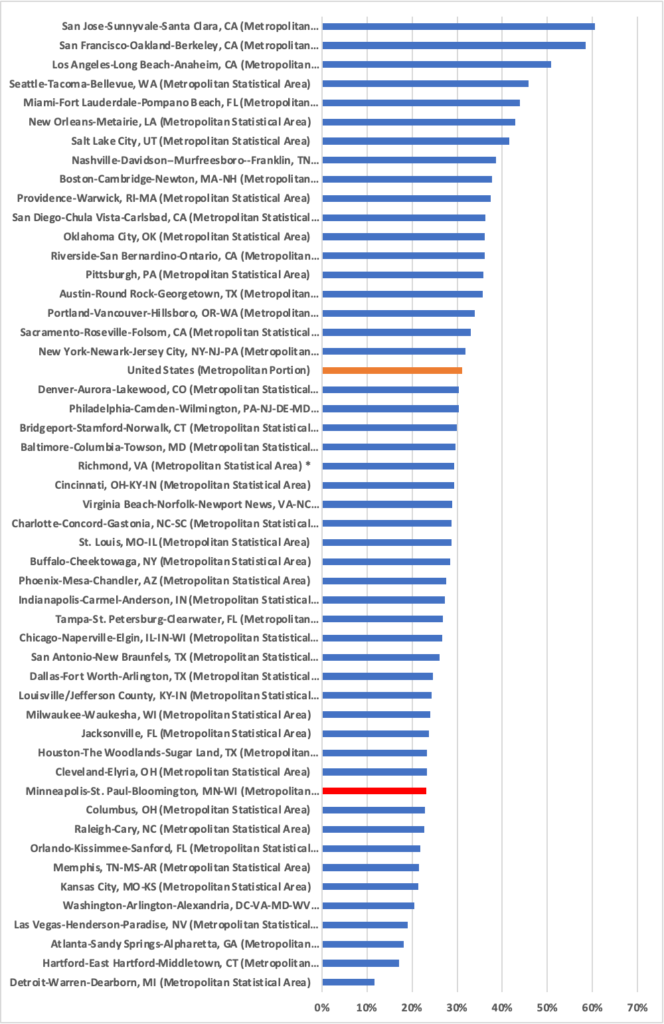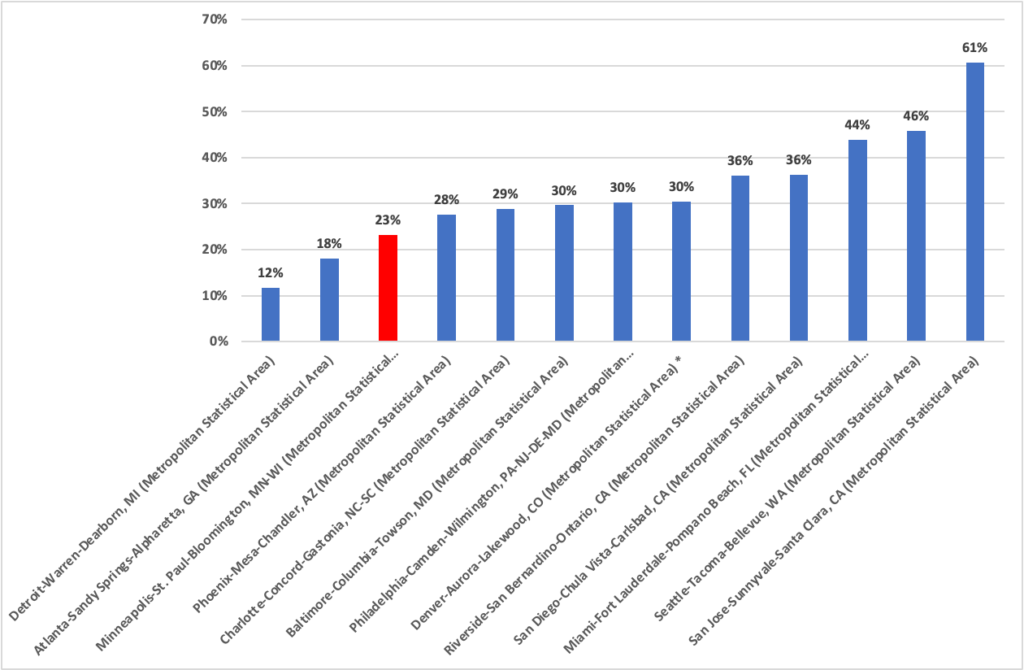Income growth in the Twin Cities metro was below average in 2021
Compared to many other metropolitan areas in the country, the Twin Cities metro — or rather the Minneapolis-St. Paul- Blooming Statistical Area (MSA) area as defined by the Bureau of Economic Analysis (BEA) — is very prosperous.
According to recently released data by the BEA, for example, per-capita personal income in the Twin Cities metro region in 2021 was nearly $72,000. This is 12 percent higher than the national average, 8 percent higher than the metropolitan average, and 43 percent higher than the nonmetropolitan areas.
What is less impressive, however — and perhaps even concerning — is our lagging growth. According to the BEA, between 2019 and 2021, per capita personal income grew by 4.9 percent in the Twin Cities metro. This is below both the U.S. average and the metropolitan average, as well as the non-metropolitan average. And between 2020 and 2021, per capita personal income grew 6.2 percent, also below national, metropolitan, and nonmetropolitan averages. In fact, when compared to other metro areas, the Twin Cities metro ranked 261 out of all 384 MSAs in per capita personal income growth.
Going back even further, the trend is disappointingly similar. Between 2020 and 2021, in inflation-adjusted terms, per capita personal income grew 23 percent in the Twin Cities metro, ranking number 305 out of 384 areas.
In fact, out of the 50 biggest metro regions (based on GDP), the Twin Cities metro ranked 40th in growth in real per capita income between 2000 and 2021.
Figure 1: Growth in real per capita personal income by Metropolitan Statistical Area (2000 -2021)

And compared to its 12 peers of comparable size (by GDP), the Twin Cities metro region was surpassed by all except for two — Detroit and Atlanta.
Figure 2: Growth in real per capita personal income by Metropolitan Statistical Area, 2000 — 2021

Mediocre at best
Minnesota is a high-income state. However, as American Experiment has noted, our state has been lagging behind the nation in both GDP and income growth in recent. This is merely a reflection of what is happening in the state’s biggest economic hub — the Twin Cities metro.
When it comes to economic growth, Minnesota’s biggest metro region is mediocre at best, consistently lagging behind both its peers and the rest of the nation.